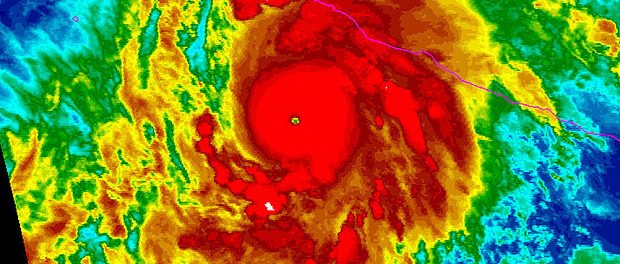NOAA National Oceanic Atmospheric 2016 Hurricane & Typhoon Predictions Are Here
It’s that time of year…when predictions come out for Hurricane and Typhoon Seasons in the Atlantic and Pacific Oceans, the Caribbean, and the Gulf of Mexico. Hurricane and Typhoon Season lasts through November 2016, though most tropical cyclones typically develop between May and October.
The Atlantic Basin, including the Gulf of Mexico and the Caribbean Sea: Hurricane Season in the Atlantic began June 1 and runs through November 30. The National Oceanic and Atmospheric Administration’s (NOAA) Climate Prediction Center expects the 2016 season to be near normal. There is a 45 percent chance of a near-normal season, a 30 percent chance of an above-normal season, and a 25 percent chance of a below-normal season. NOAA is forecasting a 70 percent chance that La Nina – which favors more hurricane activity – will be present during the peak months of the hurricane season, August through October, and a 70 percent likelihood of 10 to 16 named storms, which includes Tropical Storm Alex which formed in January. Of those, four to eight storms are predicted to strengthen to a hurricane (with top winds of 74 mph or higher) and one to four are expected to become major hurricanes (with top winds of 111 mph or higher, ranking Category 3, 4, or 5 on the Saffir-Simpson Hurricane Wind Scale). NOAA recommends that those in hurricane-prone regions begin preparations for the upcoming season now.
The Eastern Pacific: NOAA’s outlook for the Eastern Pacific hurricane season calls for a 40 percent chance of a near-normal season, a 30 percent chance of an above-normal season, and 30 percent chance of a below-normal season. NOAA’s outlook calls for a 70 percent probability of 13 to 20 named storms, of which six to 11 are expected to become hurricanes, including three to six major hurricanes.
Western and Central Pacific: NOAA’s central Pacific hurricane outlook calls for an equal 40 percent chance of a near-normal or above-normal season, with four to seven tropical cyclones likely. For information on typhoon warnings, please consult the Joint Typhoon Warning Center in Honolulu, the National Weather Service’s Central Pacific Hurricane Center, and the Regional Specialized Meteorological Center (RSMC) Tokyo – Typhoon Center.


Leave a comment